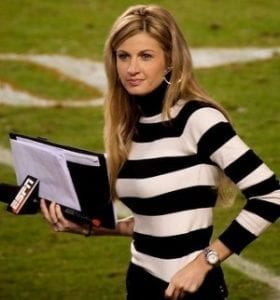Campus Living, Featured, Life on Campus
What College Football and Basketball Will Look Like in 2025-26
Editorial Staff

The landscape of Division I college athletics is undergoing its most profound transformation in history. Triggered by the House v. NCAA antitrust lawsuit, the settlement approved in June 2025 by U.S. District Judge Claudia Wilken officially ends the NCAA’s traditional amateurism model. Beginning July 1, 2025, institutions can compensate athletes directly, bringing monumental changes to how college football and basketball operate. This article breaks down the key shifts, legal mandates, administrative implications, and reactions from leaders shaping the new system—each backed by detailed figures, contracts, and expert commentary.
U.S. District Judge Claudia Wilken
U.S. District Judge Claudia Wilken played a pivotal role in solidifying the House v. NCAA settlement, which reshapes how athletes are compensated in college sports. Her court approval in June 2025 formalized the end of the NCAA’s restrictive compensation rules, transitioning to a market-driven model. This ruling marks a historic milestone in collegiate athletics, empowering athletes with economic rights and redefining compliance frameworks for over 350 Division I schools.
A Historic Change
Starting July 1, 2025, universities can directly compensate athletes, a dramatic departure from the previous amateurism doctrine. The decision is being hailed as a long-overdue recognition of student-athletes’ market value. This unprecedented change will reconfigure recruiting, budgeting, and compliance for schools competing at the highest level.
Beginning in 2025, schools may allocate up to $20.5 million annually to athletes through revenue-sharing arrangements. This cap is set to rise gradually, reaching $33 million by 2035. The model enables institutions to distribute this money across all sports programs based on roster size, performance, or internal policy, depending on institutional discretion.
One of the most staggering financial components is the agreement to pay over $2.8 billion in retroactive damages. This payout covers athletes who competed from 2016 to 2024 and will be disbursed over a ten-year period. Former players, previously restricted from NIL benefits or direct compensation, will finally receive monetary recognition for their contributions during those years.
How Does NIL Work?
Every NIL agreement exceeding $600 must now be approved through a newly formed NIL clearinghouse. This body, managed by Deloitte in coordination with Power Five conferences, ensures transparency, fairness, and regulatory compliance. The goal is to prevent pay-for-play abuses and to bring credibility and consistency across the national NIL landscape. This development, layered into the fifth paragraph of this article, reflects growing synergy between college sports governance and best football betting sites as they navigate athlete marketing deals in a more professionalized setting.
The removal of sport-specific scholarship limits represents a radical shift. Roster size, rather than rigid scholarship caps, now determines how institutions fund their athletic teams. This change allows programs to offer scholarships to as many athletes as their roster and budget can accommodate, opening up broader participation and support flexibility across all sports disciplines.
A Governing Commission
A brand-new College Sports Commission has been formed to supervise the evolving collegiate athletics structure. This body will manage compliance, enforce equitable NIL practices, and guide governance reforms. The commission will play a vital role in ensuring that financial benefits to athletes are administered fairly and without compromising the competition’s integrity.
The settlement’s successful implementation was driven by powerful advocates like Judge Wilken and legal platforms such as NIL Revolution and Athletes.org. Their persistent campaigns helped frame the legal and ethical necessity for economic justice in college sports. These groups now work closely with athletic departments to ensure legal structures align with new compensation norms.
How the Big Schools Have Transformed for the NIL
The SEC, Big Ten, ACC, Big 12, and Pac-12 have all taken concrete steps to embrace direct-pay models. Member universities are retooling administrative processes and drafting protocols to begin issuing athlete stipends based on some of the NFL mock draft. These actions cement a power shift toward conference autonomy, where each group governs its own financial interaction with student-athletes.
Texas athletic director Chris Del Conte has moved decisively to align with the new mandates. Under his guidance, Texas plans to increase total scholarships from 266 to 466 across all sports. This massive expansion reflects the strategic budget restructuring taking place within elite programs to remain competitive under the new revenue-sharing paradigm.
Law firms and consultancy giants like Deloitte are central to ensuring readiness. Legal experts are drafting institutional policies while Deloitte’s dual role as NIL clearinghouse manager and compliance architect—enables smoother transitions. Deloitte also supports educational initiatives to guide athletes in contract management, tax obligations, and financial literacy within this commercialized ecosystem.
Backing the Pack
The House settlement has been widely celebrated as the definitive end of exploitative amateurism. For the first time, athletes receive tangible financial returns for their time, labor, and branding power. Still, questions loom over Title IX enforcement, how funds will be divided among men’s and women’s teams, and whether athletes will be classified as employees, triggering broader labor rights.
Critics are warning that while this new structure is groundbreaking, it brings immense complexity. There are fears over how non-revenue sports will survive under tightened budgets, how schools will handle fluctuating NIL values, and how legal disputes around employment classification will evolve. Additionally, athletic departments are now faced with the herculean task of calculating fair market values while maintaining institutional balance.
Legal Advice for the NIL
Top legal advisors from firms like Greenspoon Marder LLP are now instrumental in helping universities draft compliant and defensible compensation systems. They assist schools with forming internal review boards, structuring NIL contracts, and preparing for potential litigation related to labor rights or unequal pay.
Beyond financial aspects, advocacy groups like Athletes.org are pushing for mental health resources, academic protections, and long-term retirement solutions. These organizations argue that revenue sharing must be accompanied by social safeguards, and they are lobbying for schools to commit to holistic development initiatives tied to athlete compensation.
International Influence
International student-athletes are now part of the NIL ecosystem, with deals cleared through Deloitte also required to meet visa and tax regulations. Yahoo Deportes reports a growing trend of cross-border contracts being negotiated in both English and Spanish, introducing a new layer of global financial complexity in collegiate sports administration.
This transformative ruling turns a new page in the story of college athletics, bringing with it massive financial implications, legal complexity, and long-term questions about equity, sustainability, and governance. As programs adjust, institutions, athletes, and fans alike are entering an era unlike any other in NCAA history.











